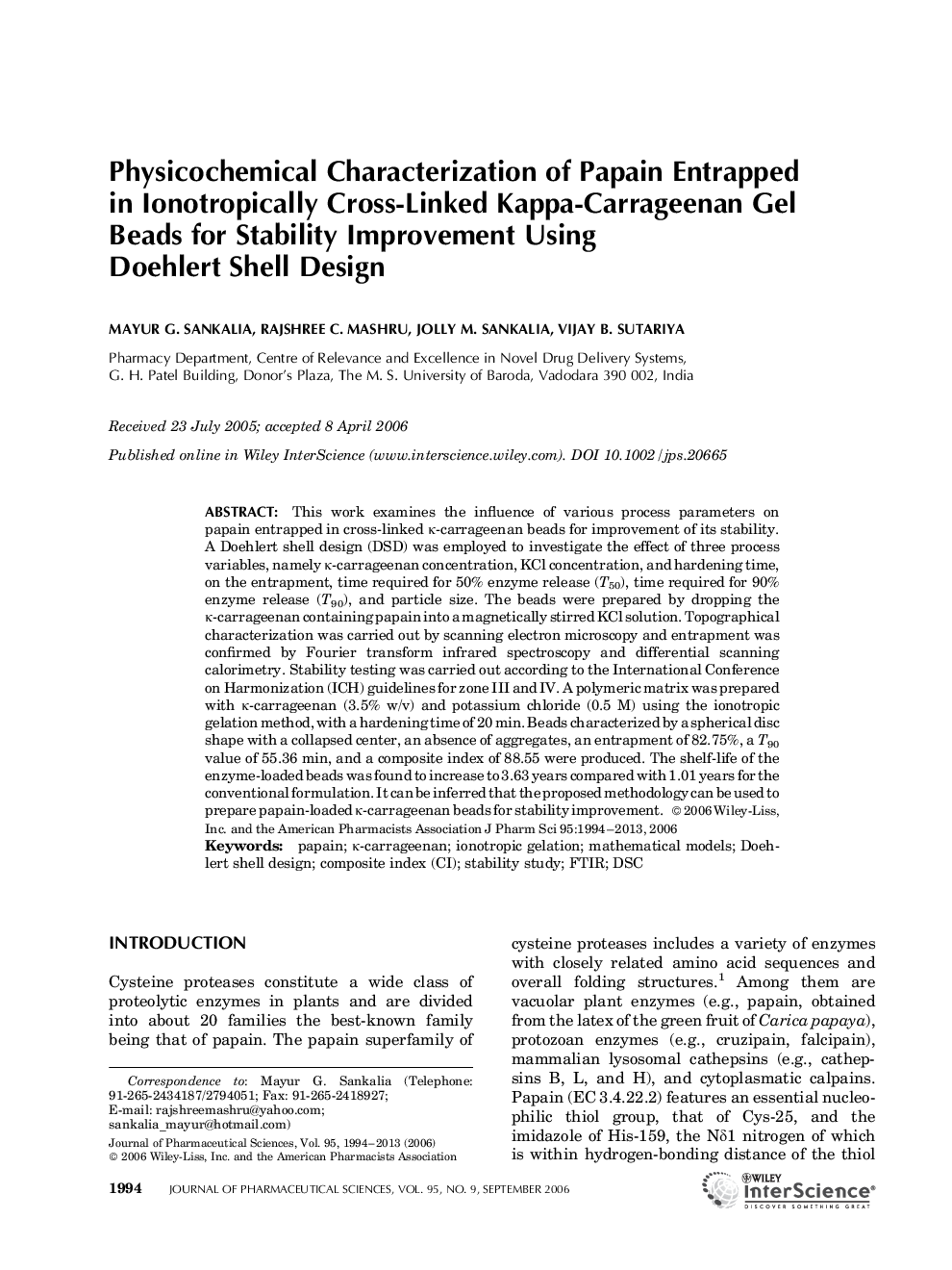| Article ID | Journal | Published Year | Pages | File Type |
|---|---|---|---|---|
| 2488058 | Journal of Pharmaceutical Sciences | 2013 | 20 Pages |
Abstract
This work examines the influence of various process parameters on papain entrapped in cross-linked κ-carrageenan beads for improvement of its stability. A Doehlert shell design (DSD) was employed to investigate the effect of three process variables, namely κ-carrageenan concentration, KCl concentration, and hardening time, on the entrapment, time required for 50% enzyme release (T50), time required for 90% enzyme release (T90), and particle size. The beads were prepared by dropping the κ-carrageenan containing papain into a magnetically stirred KCl solution. Topographical characterization was carried out by scanning electron microscopy and entrapment was confirmed by Fourier transform infrared spectroscopy and differential scanning calorimetry. Stability testing was carried out according to the International Conference on Harmonization (ICH) guidelines for zone III and IV. A polymeric matrix was prepared with κ-carrageenan (3.5% w/v) and potassium chloride (0.5 M) using the ionotropic gelation method, with a hardening time of 20 min. Beads characterized by a spherical disc shape with a collapsed center, an absence of aggregates, an entrapment of 82.75%, a T90 value of 55.36 min, and a composite index of 88.55 were produced. The shelf-life of the enzyme-loaded beads was found to increase to 3.63 years compared with 1.01 years for the conventional formulation. It can be inferred that the proposed methodology can be used to prepare papain-loaded κ-carrageenan beads for stability improvement.
Related Topics
Health Sciences
Pharmacology, Toxicology and Pharmaceutical Science
Drug Discovery
Authors
Mayur G. Sankalia, Rajshree C. Mashru, Jolly M. Sankalia, Vijay B. Sutariya,
